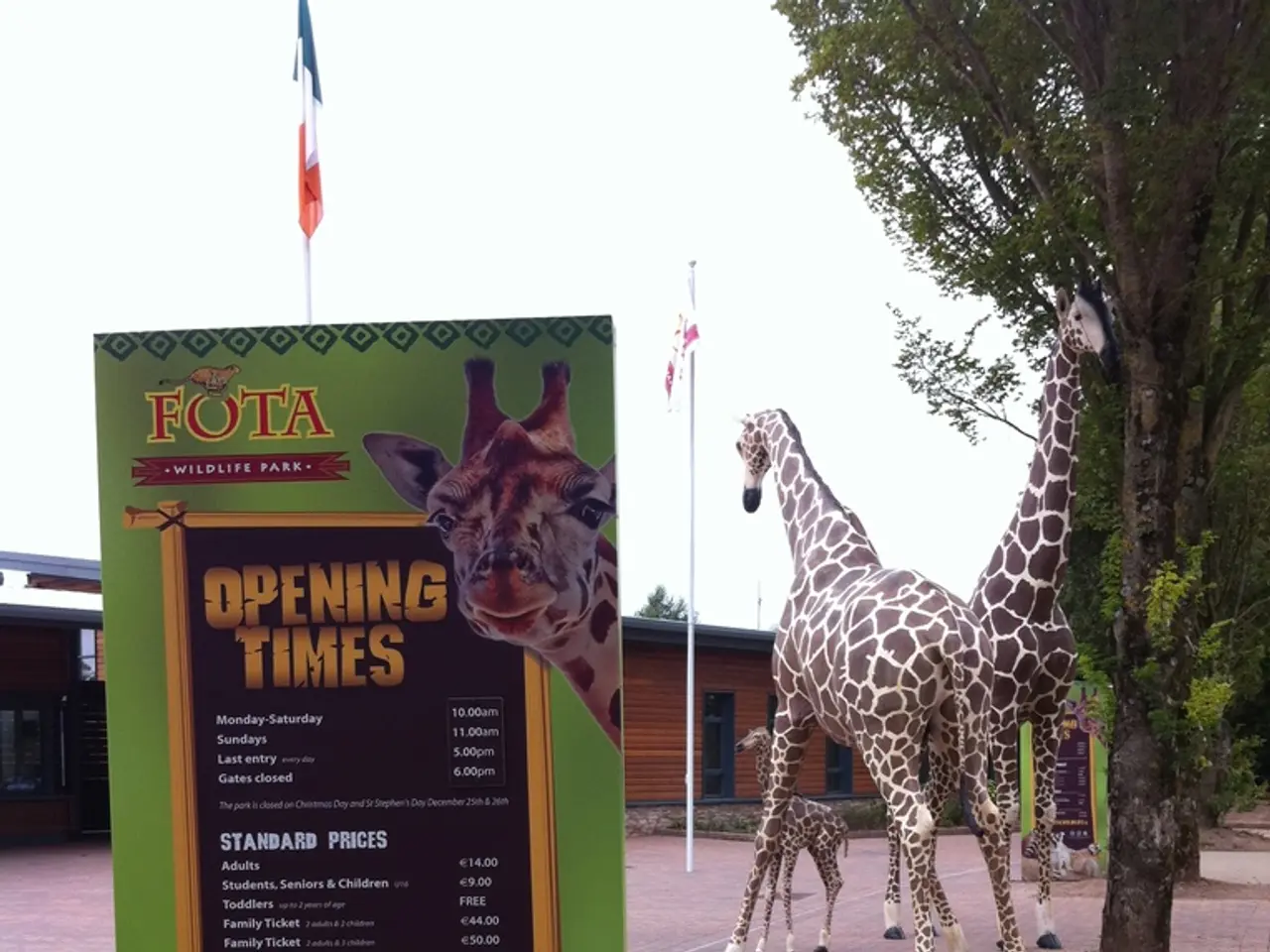Weekly update on verdant developments
In the world of wildlife conservation, the International Union for Conservation of Nature (IUCN) has distinguished four species of giraffes in Africa: Northern giraffes, reticulated giraffes, Masai giraffes, and Southern giraffes. The most threatened species is the Northern giraffe, with only 7,000 individuals in the wild, while the reticulated giraffes number approximately 21,000, Masai giraffes around 44,000, and Southern giraffes 69,000.
Moving onto Antarctica, the number of tourists has grown significantly over the past two decades. From 20,000 to around 120,000, each tourist's visit can accelerate the melt of approximately 100 tons of snow. This, according to Raul Cordero, a researcher at the University of Groningen in the Netherlands.
The concentration of fine particles containing heavy metals in human activity zones in Antarctica is 10 times higher than it was 40 years ago, due to the fossil fuels used by ships. This issue is further compounded by scientific expeditions, which are suggested to limit the use of fossil fuels, especially near sensitive areas.
In a positive note, the CleanUpXL project, launched by four Dutch environmental organizations, regularly conducts missions to clean up the approximately 800 tons of waste from the North Sea disaster that occurred more than six years ago. One of the notable finds is debris, nets, and electrical cables believed to have come from the MSC Zoe, a large container ship that lost 342 containers filled with various items during a storm in the North Sea in January 2019.
Harold Batteram, a diver, has been instrumental in these clean-up missions, retrieving a significant amount of debris from the North Sea.
In Hong Kong, a project to install around 50 artificial nests in trees has been launched to help the sulfur-crested cockatoo breed. This rare subspecies, with a population of around 150 individuals in Hong Kong, represents a tenth of the world population.
In the tech world, Google's artificial intelligence tool, Gemini, uses energy equivalent to less than nine seconds of television per query, according to a study by Google's own researchers. However, the energy impact data for Gemini should be taken with caution, as they do not include the training of AI models and have not been verified by third parties.
Independent researchers often criticize tech giants for maintaining a certain opacity about the functioning of their programs. This transparency issue is a topic of ongoing debate in the tech industry.
Lastly, each species of giraffe has different population sizes, threats, and conservation needs. As we work towards a more sustainable future, it's crucial to remember the importance of conservation efforts for all species, from the world's tallest to the smallest.








